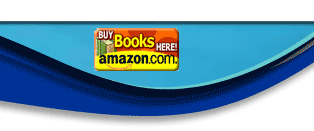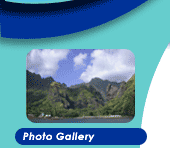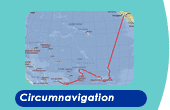August 18, 200219º03'S, 169º55WStories in this section... Niue
|
0700: Three thin horizontal strips of orange pierce the grey sky all around us. The sun is out there in the east, trying-but not succeeding-to break through. A shadowy strip of land is barely perceptible through the grey; in fact, the brightest color this dawn is the milky froth of the surf foaming and spouting high against the rocky cliffs on the island's south shore. This is Niue; "Lois' Favorite Tropical Coral Island" says the headline of the Creative Memories album I had put together after our first visit back in July of 1998. Despite the grey, Gunter and I give each other the high sign. We are happy to be back. "Will it be the same delightful island we cherished in our thoughts?" we wonder as Pacific Bliss drones along at 6.5 knots, both engines engaged, as she glides over southwesterly swells. We have been motoring since the wind turned to the WSW yesterday; our course is too close-hauled for sailing. We are thankful that the wind has been benign at only 8 knots or less. We have just finished the third overnight during our passage from Palmerston, in the Cooks-an uneventful passage that began with two days of brisk sailing on a beam reach. For the entire trip of 456 nautical miles, we have averaged 6.5 knots. Not bad. As the sky lightens, the long, low-lying coral atoll begins to take shape. Its trees are outlined upon the flat top like stray hairs out of place. It appears to have two layers, like a two-tiered wedding cake. Pacific Bliss changes course and begins to round the island's western side, heading to its only port, Alofi. Niue is reportedly the world's largest coral atoll. Its coral makeup creates the exciting rugged coastline replete with cliffs and caves and chasms. I am anxious to explore more of them during this visit; our short 2 ½ day stay here while voyaging on the Mahina Tiare didn't do them justice. I remember exploring the caves and then walking out on the reefs at low tide, holding my camera straight down, taking astoundingly colorful photos of sea urchins, starfish, and multi-colored coral. In La Jolla, these reefs would be over-run and trampled down in no time; here they are pristine, almost untouched. Only eight tourists were on the island when we were here before, and everyone knew who they were, where they had eaten the day before and what they had done! Even if one wanted to walk someplace to get some exercise, every passing vehicle stopped to ask if one wanted a ride! Other than by yacht, the only other way to get to this island is via Royal Tongan airlines, which flies from Auckland, New Zealand to Tonga and on to Niue once a week. Niue's remoteness is part of the attraction: it is the only land mass in the center of a triangle of Polynesian islands made up of Tonga, Samoa and the Cook Islands. It is 560 km southeast of Samoa, 386 km east of Tonga, and 2400 km northeast of New Zealand. There's no long stretches of sandy beaches here, as in French Polynesia. But the rugged coastline and close-by reef does provide for intimate swimming coves and great snorkeling-and a different kind of beauty. Niue has less than 1800 inhabitants who have dual citizenship, as an independent nation in free association with New Zealand. They are bilingual, speaking both Niuean and English. They have a proud, independent lifestyle and pass down their traditions. One of these is the koloama season where a sardine-like fish visits Niue's shores and for a period, they are closed to public swimming. Then there's the catching and serving up of the giant coconut crabs from the forests-reserved only for the native population! Misa had told us all about that-and every way imaginable to use the coconut palm-during his nature tour taken during our last visit. The name Niue comes from niu (coconut tree) and e (behold). But centuries ago, Polynesian settlers from Tonga, Samoa, and Pukapuka (in the Cooks) gave Niue the name of Motusefua (island on its own). I wonder if that heritage is what makes these islanders so independent. Then there's the old nickname, "Savage Island." I was surprised to see that name still on our small-scale chart of the South Pacific (along with Niue and N.Z.). Captain Cook, so the story goes, sighted Niue back in 1774, but was refused landing by the locals and then gave the island this name. Tonga, in contrast, is still called "The Friendly Islands" on my chart. That's because he sailed on to receive a friendly reception there. He and his crew were received with lavish friendliness: they were offered heaping plates of food; dances and boxing matches were staged in their honor. Some accounts say that the islanders intended to roast and eat Cook and his men as part of the feast, but that Cook's exuberant thanks at his reception persuaded them to change their minds. (Cook never visited Vava'u, the islands of northern Tonga that we plan to visit next. They were not "discovered" until 1781 by the Spaniard Antonio Mourelle.) The new nickname for Niue, affectionately given by the islanders who live here, is "The Rock." It fits. Not only because of the limestone caves, caverns and arches referred to in their tourist brochures, but because these people are as solid and independent as a rock. I can't wait to visit some of them again! 0900: I've been too excited to go back to sleep after my 0300-0600 watch, and now we are finally turning into port. Through our binoculars, I see six other yachts in the harbor, their masts swaying in the swells. I see the surf slamming right into the shore, and the wharf loaded with huge earth-moving equipment, in addition to two cranes. One of the cranes would be used to pick up Petit Bliss to deposit her on the wharf when we checked in. We knew from the previous visit here by yacht that there is no protected harbor-for boats or for dinghies. But what was happening on shore? We would not know until tomorrow. It was clear from another yacht's VHF call that there would be no check-in, and hence, no leaving the boat, on a Sunday. 1000: High Fives as we picked up the mooring on the first try. We are safe and secure. The church bells are ringing for the Sunday service. In Niue, Sunday is considered a day of rest and worship. Most people here attend church in the morning and again in the afternoon. Golf, sightseeing and swimming are accepted activities, but boating and fishing are not allowed. After our passage, we are content to go down for our siesta and then enjoy a good meal and a restful day. -------------------------------------------------
|
|
|
|











